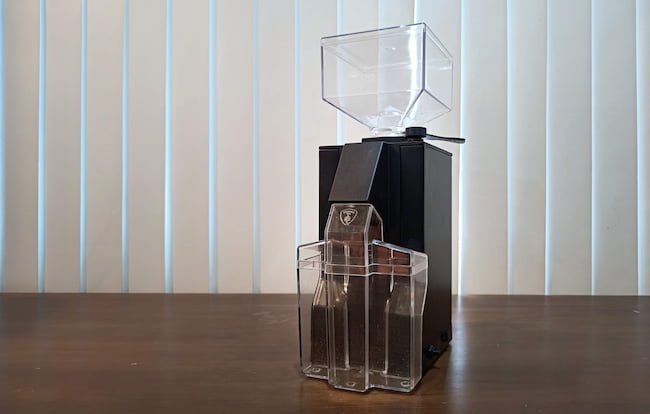Eureka is famous for its espresso grinders. Now the Italian brand is getting into filter brewing.
In this review, we’ll be looking at the company’s most affordable option in its new range of filter grinders.
Eureka Filtro has some outstanding features but there are also a few severe drawbacks you should be aware of.
I have been testing this device for a couple of months now, and I’m ready to tell you all about the pros and cons.
About Eureka
Eureka is an Italian coffee brand based in Florence. It’s one of the coffee industry’s most well-known and respected companies. The brand only produces coffee grinders and has been doing so for more than 100 years. That should tell you something about their dedication!
According to the dictionary, “eureka” is an exclamation of triumph on discovering or solving something. That sounds pretty promising.
The company offers a wide range of grinders, from entry-level to professional models. However, previously the focus has solely been on espresso grinders.
This has changed recently with the release of the Eureka Filtro and a couple of more expensive brew-focused models.
The Filtro is a flat burr grinder designed for home brewers. It looks a lot like the incredibly popular Mignon Specialita, which I have previously reviewed.
However, that model is explicitly created for espresso, so the big question for this review is whether the same design can also successfully be applied to drip coffee.
Design
The Filtro certainly looks the part of a quality coffee grinder. It has a sleek metal body with Eureka’s signature touches, such as a step-less adjustment knob and the red logo on the backside.
The small footprint means that it won’t take up too much counter space, which is always a plus. Weighing in at 5.6 kilo, one can still feel reassured that there’s some heft to the unit.
My review unit came in a nice matte black color, and both when it comes to aesthetics and sturdiness, I’m more than pleased with the grinder.
💡 Sidenote: The Filtro is only a bit more expensive than the oft-recommended Baratza Encore, but in terms of weight and heft, it’s in a different class.
I recently opened up the whole Baratza Encore to install a new burr, so I know how it looks inside; it’s mostly plastic. The Filtro, however, is built like a tank. It’s very similar to Eureka’s much more expensive line of domestic espresso grinders.
The motor is big and sturdy, the chassis is steel, and the grinding chamber is steel.
This is fortunate because it means that the Filtro can be considered a tool rather than an appliance.

Filtro hopper & single dosing
The Filtro looks like the Mignon Specialita and Mignon Silenzio, two of Eureka’s most popular espresso grinders.
However, this also means that some of the design features that are intended for espresso are carried over to the Filtro.
For instance, you have Eureka’s iconic square hopper, which I think is visually stunning. However, recently home brewers are increasingly embracing single-dosing, so it’s a shame that Eureka hasn’t equipped the Filtro with a hopper suitable for that.
I find it strange that it has taken so many years for grinder manufacturers to appreciate single-dosing.
I can understand why there might be a case for using a hopper for traditional blend-based espresso consumption, but I don’t see the benefit when it comes to filter coffee.
- Freshness: It should be evident that the beans are more likely to get stale in the hopper.
- Variation: If you fill the hopper, changing between different beans is complicated.
- Lack of precision: If no accurate time or weight-based dosing is built into the grinder, you’ll end up with random batch sizes. It’s so easy to measure out what you need and then proceed to grind it.
- Retention: Traditional hoppers create more retention and exchange.
IMO it’s also rare for domestic users to brew more than the max capacity of a drip coffee maker. So, a hopper would only need to hold around 100 grams to serve most filter coffee drinkers well. The square hopper holds 300 grams of coffee.
If I have to guess why big hoppers are still the rule rather than the exception, it’s probably due to tradition rather than rational thinking.
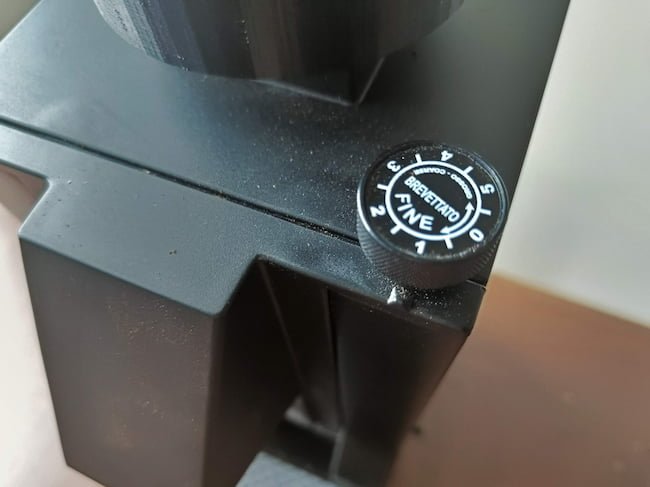
Retention?
So the fact that there is a big hopper gives it away; this isn’t a grinder designed for single dosing.
Unsurprisingly, that also means you’ll have a significant amount of retention/exchange from brew to brew. The exchange has typically been around 1-1.,5 grams in my testing period.
So let’s say you’re brewing a reasonably standard 15-gram brew. In that case, up to 10% of your total volume of coffee could be stale leftovers. This will impact flavor.
But on the other hand; 1,5 grams is not a big deal if you’re brewing a big batch of coffee.
In a basket with 60 grams of fresh coffee, 1,5 grams will be harder to detect.
I guess that most people reading this are primarily brewing small batches for one or two persons, so this amount of retention is unfortunate.
However, if you brew huge batches, and need a grinder for family gatherings, events, or the office, then this level of retention is much more acceptable.

Modifications and bellows
Of course, you can do some things to reduce the retention. The most obvious solution is to get rubber bellows in place of the hopper. This will dramatically reduce the amount of leftover coffee in the grinder.
I think it’s also relatively useful to remove the clump crusher, simply open up the grinder and unscrew it. It seems to facilitate the grounds exiting the grinds chamber more smoothly.
In my testing period, I noticed how the chute also seemed to have a slightly unfortunate design; it would always retain around 0.4-0.6 grams of coffee. This seems like something that Eureka could quickly fix with a minor redesign.
The chute retention is easy to get out with a brush or a little shake of the grinder, though.
Be sure out to check my video review, where I go into a few more mods and hacks.
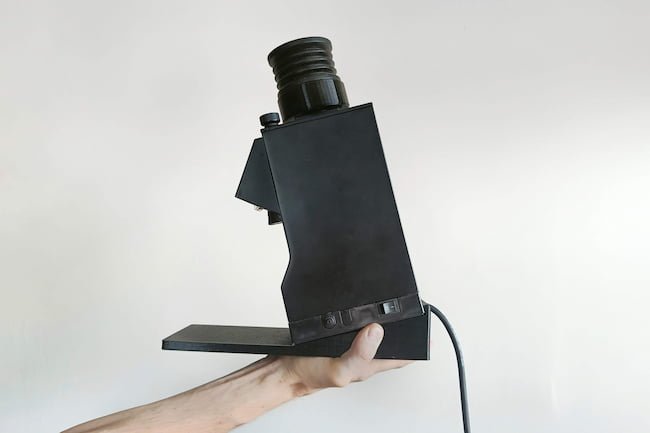
Other workflow issues?
There are a few other minor quirks about the Filtro.
First and foremost, the grounds bin suffers from an overly convoluted design. It’s clunky, has a lousy pour, and fine coffee dust can get stuck easily due to the unusual design.
However, it’s straightforward to grind into another receptacle or even your brewer of choice.
The switch is also irritating; you must hold it in for the grinder to run. However, there’s already a power switch on the device. It would have made more sense if this also doubled as an on/off button.
On Eureka’s slightly more expensive Crono and Filtro Silent models, you get a timer button instead, which is a more elegant solution. But paying $40 extra for this function seems absurd.
The Filtro Burr Set
Now, on to the most crucial part of any grinder review, we’ll have to discuss the burrs.
Eureka has a long history of producing burrs with espresso geometry. This is their first foray into manual brewing, however, that’s impossible to tell.
The geometry of this set of 50 mm flat burrs is exceptional.
The consistency is remarkable all the way from French press to Moka pot.
I recently did a big sifting test where I pitted the grinder against a range of high-end models (some of them with SSP burrs installed), and the Filtro came out as the most consistent.
This is slightly shocking!
Typically, bigger burrs are seen as more consistent, but in this sifting test, the Filtro burr set ran circles around bigger burr sets from SSP.
Over the years, I have done a lot of sifting tests, and I’m confident that this is the most consistent grinder I have tested so far.

An extreme grinder
In grinders, consistency is something that we talk about and admire. But what does it mean?
Well, I think to a certain degree it means that flavors are more nuanced, balanced and accurate.
However, when you get to this extremely high level of consistency, it also means that you’ll have to change your brewing style. The Filtro almost doesn’t produce any fines, so to extract some body and sweetness, you’ll have to grind finer than you’re probably used to and aim for a higher extraction yield.
This threw me off slightly when I began testing the grinder. The first cups were a little hollow and empty. Then I changed the grind size and ratio (closer to 500-600 microns and a 1:18 ratio), and suddenly the coffee tasted better.
I’d say this grinder performs well at an extraction yield of around 21%. Compared to grinders in the same price range this is an amazing accomplishment.
💡 Bonus-tip: It’s a bit counterintuitive, but super consistent grinders can oftentimes be more challenging to use! Even though grinders such as 1Zpresso K-Max and Comandante C40 are less uniform, it’s easier to hit a nice extraction with them than it is with high-end flat burr grinders.
In terms of flavor, I will say that the Filtro is a reasonably neutral grinder. The SSP multipurpose burr set tends to emphasize acidity and higher notes. I would describe the Filtro as closer to the middle notes. It’s a balanced cup profile that doesn’t highlight any specific attributes.
If you love acidity and juicy notes, these burrs are probably not for you. However, if you want something accurate, precise, and neutral, then they perform well.
Besides bringing out clean flavors, using a remarkably consistent grinder like the Eureka Filtro, also means you’ll save some money on coffee.
- A lousy grinder will let you brew a 1-liter batch with 66 grams of coffee.
- With a consistent grinder like the Filtro, you can brew a liter with similar TDS with just 55 grams of coffee.
Assuming that you brew a carafe like that every day of the week, you’ll be able to save a bag of coffee every month. Over time, this represents a big difference.
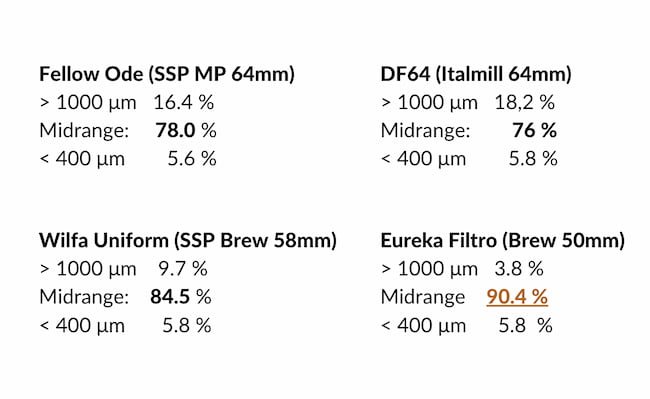
Can it grind for espresso?
The Filtro has burrs that focus on drip coffee. Does that mean that the grinder cannot grind for espresso?
Well, yes and no.
Technically, you can grind fine enough, and I have pulled some decent shots from this grinder.
However, the retention gets bad when you attempt to grind this fine.
Overall, it’s just a frustrating experience. If you put in 16 grams, maybe you’ll only have 14.5 grams coming out. Even with bellows installed, getting all the grounds out takes a lot of time and effort.
At the same time, the adjustment dial is not calibrated for espresso. Instead, it uses a different pitch that is coarser, so you won’t be able to dial in shots very accurately.
However, I find that you can use the grinder pretty well for more modern espresso. So, for instance, lungos where you grind a fair bit coarser, can be exquisite with this grinder.
Overall, don’t buy this grinder for espresso. Instead, buy it for pour over and drip, and then see it as a bonus: it can grind very fine if you want to brew AeroPress, Moka pot, or lungo.
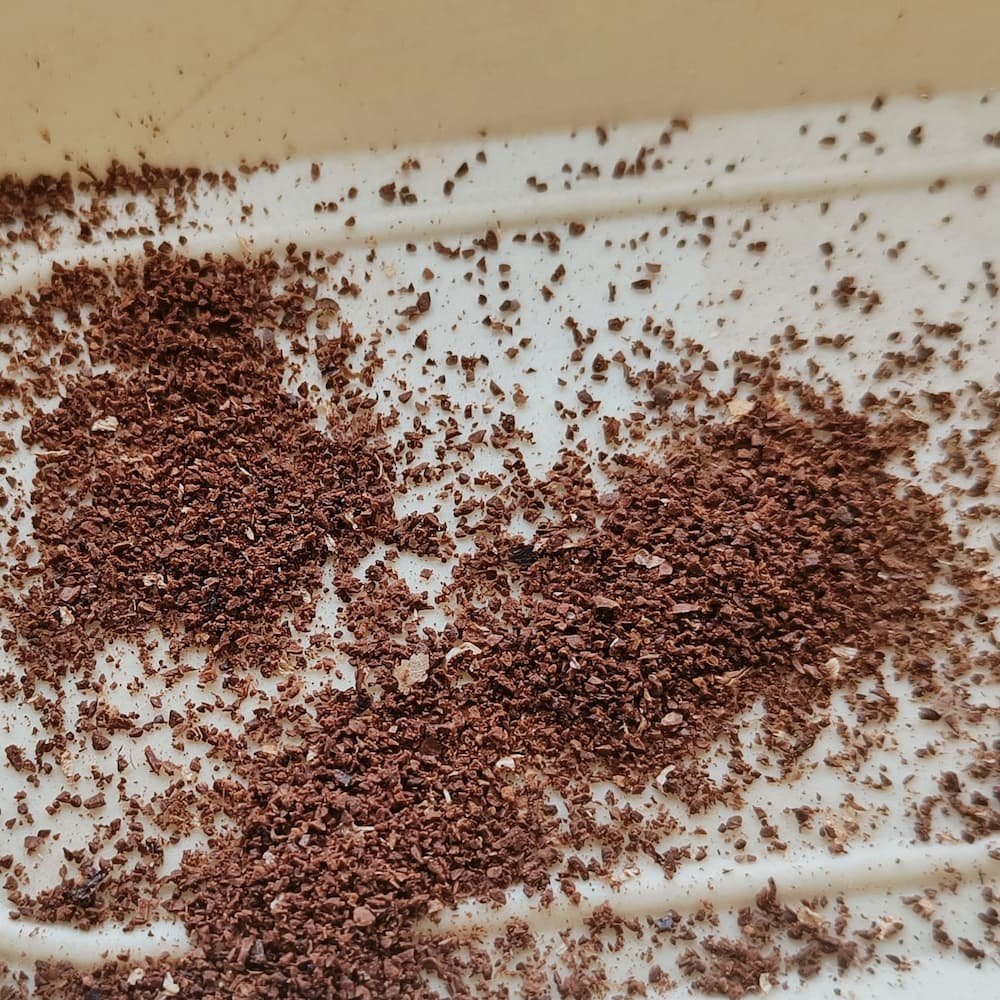
Who is it for?
The Filtro is a bit of a paradox. It has an attractive price and many valuable attributes, but it’s still hard to find the perfect audience for this grinder.
It is incredibly uniform and unimodal in its grind distribution, which is something that dedicated coffee geeks will be able to appreciate.
You’ll have fun if you drink lighter roasts and know about extraction theory. But if you’re this type of person, you’re also likely to be single-dosing and brewing smaller batches between 12-30 grams.
This type of workflow is not Filtro’s strong suit.
Premium hand grinders or more modern electric grinders (Fellow Ode or Wilfa Uniform) work better for single-dosing.
However, the Filtro is way cheaper than most flat burr grinders, and some people refuse to use a hand grinder. So maybe the Filtro could be an exciting option for those folks?
If I was choosing between this and the Baratza Encore/Virtuoso, I would probably sacrifice the slightly nicer UX on those models and opt for the better-built and way more consistent Filtro.
Another scenario is people who need to grind a lot of coffee in a uniform and consistent matter. In that scenario, the hopper makes more sense, and retention should be less of a worry.
Finally, the Filtro could be a reliable and well-performing grinder in an office setting, for instance, or in a local club or organization.
Conclusion
The Eureka Filtro is an extraordinarily consistent grinder that produces clear and balanced flavors.
If you’re looking for a well-built device that also excels in consistency and grind distribution, this could be a suitable model.
At the same time, it also has a couple of frustrating issues.
The lack of fines in the cup is nice, but it doesn’t mean much when you also have to worry about retention/exchange and a slightly clunky workflow.
If you’re willing to work around these issues, you get amazing value for your money. In this price range, you’ll mostly find grinders with conical burrs, and the Filtro is a couple of steps above those in terms of construction and grinding.
